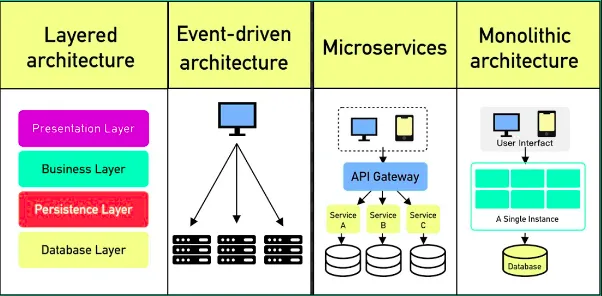Published
-
Microservices Architecture Pattern

Microservices architecture is a design approach where a large application is broken down into smaller, independently deployable services.

These services communicate with each other using lightweight mechanisms, often APIs.

Each service focuses on a specific business function, making the application more flexible, scalable, and reliable.
Core Features
- Small, focused services (one service = one business function)
- Independent deployment
- Decentralized data management (each service has its own database)
- API-based communication
- Service discovery and load balancing
- Containerization (typically using Docker)
- Automated deployment (CI/CD)
Advantages
- Independent Deployment: Services can be updated without affecting others.
- Technology Flexibility: Each service can use a different tech stack.
- Scalability: Scale specific services based on demand.
- Fault Isolation: If one service fails, it won’t bring down the whole system.
- Team Autonomy: Teams can work on services independently.
- Easier Maintenance: Smaller services mean smaller codebases to manage.
- Better Fault Tolerance: Issues in one service don’t affect others.
Disadvantages
- Increased Complexity: More services mean more to manage.
- Network Latency: Communication between services can be slow.
- Data Consistency: Keeping data in sync across services is difficult.
- Testing Complexity: Testing multiple services working together is harder.
- Operational Overhead: More services mean more monitoring and management.
- Complex Development Environment: Harder to set up locally.
- Deployment Coordination: Managing versions of different services can be tricky.
When to Use
- For large, complex applications.
- When frequent updates are needed.
- When high scalability is a priority.
- When teams are working on different parts of the system.
- When different parts of the system have different resource needs.
- For organizations with multiple development teams.
- Applications with clear business boundaries.
When Not to Use
- For small or simple applications.
- When you have a limited development team.
- When time and resources are tight.
- If network latency is a big concern.
- When strong data consistency is required.
Use Cases
- E-commerce Platforms: Services for Products, Orders, Payments, Shipping, Users.
- Social Media Applications: Services for User Profiles, Posts, Comments, Notifications.
- Banking Systems: Services for Accounts, Transactions, Loans, Investments.
- Streaming Platforms: Services for User Management, Content Delivery, Recommendations.
Best Practices
- Design Principles:
- One business function per service.
- Focus on API-first design.
- Loose coupling between services.
- High cohesion within each service.
- Development:
- Use containers (Docker)
- Implement circuit breakers for fault tolerance.
- Maintain API documentation
- Automate testing for all services.
- Data Management:
- Each service should manage its own database.
- Use event sourcing if necessary.
- Handle distributed transactions properly
- Operations:
- Centralized logging
- Monitor and alert on service performance.
- Automated deployment
- Use service discovery for dynamic service locations.

Some of Software Architecture Patterns
